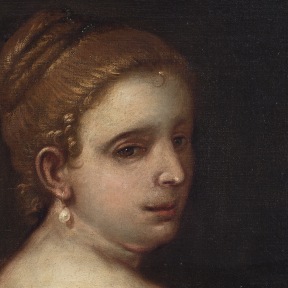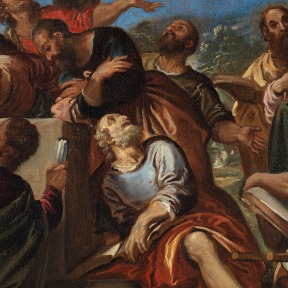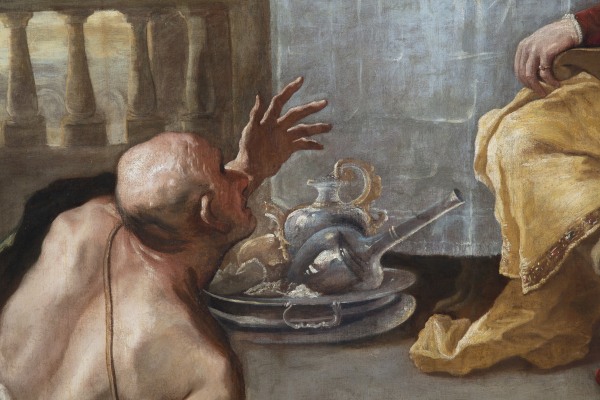-
Biografie
Antonio Carneo (Concordia Sagittaria, Italien 1637 – Portogruaro, Italien 1692)
Carneo wurde 1637 in Concordia Sagittaria in der Provinz Venedig geboren. Er verbrachte seine ersten Jahre in Portogruaro, bevor er nach Cordovado zog. Dort ist seine Anwesenheit zwischen 1658 und 1667 dokumentiert.
Es gibt nur wenige Informationen über sein Leben und seine Werke, einschließlich seiner künstlerischen Ausbildung. Diese fand wahrscheinlich bei erlesenen Schlüsselfiguren der venezianischen Malerei statt, wie Palma il Giovane und Padovanino, Tintoretto und Jacopo da Ponte, genannt Bassano.
Im Jahr 1667 zog er nach Udine in ein Haus des Grafen Leonardo Caiselli, der ihm im Austausch für seine Gemälde Schutz, Unterkunft und Verpflegung gewährte.
Als ausgereifter Maler mit einer verfeinerten Bildsprache wird sein Werk vom Helldunkel und der Faszination für die gezeichneten Gesichter der einfachen Leute sowie der allgemeinen Bevölkerung beherrscht. Deren Mimik betont und fängt er mit großem Geschick im Stile Caravaggios ein.
Carneo erhielt - aufgrund seines Status als etablierter Maler - zahlreiche private, öffentliche und kirchliche Aufträge. Diese ermöglichten ihm, eine breite Palette von sich entwickelnden Quellen zu erforschen und seinen Experimentierspielraum zu erweitern. Dadurch wurde er zu einer der bedeutendsten Figuren des venezianischen Barocks.
Seine letzten Lebensjahre verbrachte er in Portogruaro, wo er 1692 starb.
Foto UniCredit Group (Sebastiano Pellion di Persano)
-
Kunstwerke
-
 Cristo e l’adultera, c.1650-1700Details
Cristo e l’adultera, c.1650-1700Details -
 Il Redentore, c.1650-1700Details
Il Redentore, c.1650-1700Details -
 La Sacra Famiglia, c.1650-1700Details
La Sacra Famiglia, c.1650-1700Details -
 Menade addormentata, c.1650-1700Details
Menade addormentata, c.1650-1700Details -
 Aracne tesse la tela (o l’Indovina), 1660Details
Aracne tesse la tela (o l’Indovina), 1660Details -
 La buona ventura (La seduzione), 1660Details
La buona ventura (La seduzione), 1660Details -
 Vecchia con conocchia e giovane con spighe, 1660Details
Vecchia con conocchia e giovane con spighe, 1660Details
-
Antonio Carneo: Italienisch, 1637-1692
Ein bedeutender italienischer Maler aus dem friaulischen und venezianischen Raum in der zweiten Hälfte des 17. Jahrhunderts. Er schuf Gemälde mit allegorischen, mythologischen und religiösen Themen im Stil von Caravaggio.
Join Our Mailing List
* denotes required fields
Um Ihre Anfrage zu beantworten, verarbeiten wir die von Ihnen übermittelten personenbezogenen Daten gemäß unserer Datenschutzerklärung.















